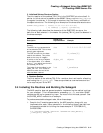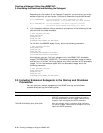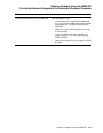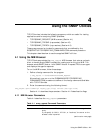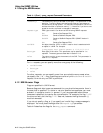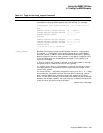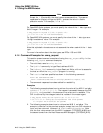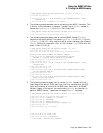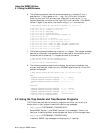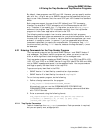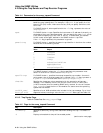
Using the SNMP Utilities
4.1 Using the MIB Browser
Table 4–2 Flags for the snmp_request Command
Flag Description
-d
Specifies hexadecimal dump mode. Before displaying a return value, displays
a hexadecimal dump of SNMP packets sent and received. For example:
$ snmp_request host1 "public" getnext -d -v 2c 1.3.6.1.6.3.1.1.6
Sent:
30290201 01040670 75626C69 63A11C02 0).....public...
047BE9C1 BD020100 02010030 0E300C06 .{.........0.0..
082B0601 06030101 060500 .+.........
Received:
30820033 02010104 06707562 6C6963A2 0..3.....public.
2602047B E9C1BD02 01000201 00308200 &..{.........0..
16308200 12060A2B 06010603 01010601 .0.....+........
00020478 D917FC ...x...
1.3.6.1.6.3.1.1.6.1.0 = 2027493372
-i max_ignores
Specifies the number of times the MIB browser listens for a reply packet
to a request if it receives an invalid packet (caused by an invalid packet
identifier, version, or SNMP version and command combination). Specify a
positive integer for the value (max_ignores). If you specify a negative value,
it will be converted to an unsigned positive integer. If you specify 0, no
retries are attempted.
If, after an invalid reply packet is received, a valid reply packet is received,
the ignore counter is reset to the value of max_ignores.
If a timeout occurs after an invalid packet is received, the packet is resent,
the resend counter is decremented, and the ignore counter is reset to the
value of max_ignores.
You cannot use the
-i
flag when you perform a query with the
-l
or
-t
flags
to automatically increment the input OID and continue querying a server
after a general SNMP error has occurred, as may happen with a faulty
server. In this case, the query is terminated even though the end of the MIB
selection has not been reached. You must manually increment the input OID
to skip the error and continue with the query.
(continued on next page)
Using the SNMP Utilities 4–3





